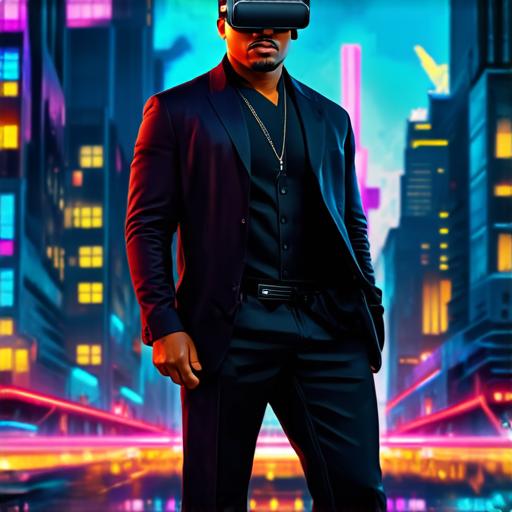
Who Created Virtual Reality?
Terrence Howard’s claim to have invented virtual reality has sparked controversy within the tech industry. While some people may see it as a publicity stunt, others take Howard’s words more seriously. According to Howard, he first developed VR technology in 1968 while working as an actor at a theater in New York City. He claims that he used a projector and a screen to create a virtual environment for his performances. He later patented the technology and founded a company called Virtual Reality Enterprises.
However, many experts in the field of VR dispute Howard’s claim to be its creator. They point out that VR technology has been in development since the 1960s, with researchers like Ivan Sutherland and Thomas Vader creating early versions of virtual reality systems.
Jaron Lanier is widely credited with popularizing the term “virtual reality” and developing the first commercial VR system, the Sword of Damocles.
The History of Virtual Reality
Virtual reality technology has a long and fascinating history. In 1962, Ivan Sutherland created the first virtual reality headset, known as the Sketchpad. This device used a stereoscopic display to create a 3D image that could be viewed in real-time. In 1968, Thomas Vader developed the first computer-generated virtual reality system, called the Sword of Damocles. This system required a large computer and a headset with a screen mounted on a boom above the user’s head.
Over the years, virtual reality technology has continued to evolve, with advancements in computer hardware and software making it possible to create more immersive and realistic virtual environments. Today, virtual reality is used in a variety of applications, including gaming, entertainment, healthcare, education, and training.
The Impact of Virtual Reality on Society
Virtual reality technology has had a significant impact on our society, changing the way we interact with each other and the world around us. One of the most notable impacts of virtual reality is its ability to create highly immersive experiences that can be used for a wide range of purposes.
In gaming, virtual reality allows players to fully immerse themselves in a game world, creating a more engaging and realistic experience. In entertainment, virtual reality can be used to create interactive experiences that allow users to explore new environments and interact with characters in unique ways.
Virtual reality also has applications in healthcare and education. For example, it can be used to simulate medical procedures or to create virtual field trips for students. Virtual reality technology has also been used in the fields of architecture and design, allowing people to visualize and explore building designs in a virtual environment before they are built.
However, virtual reality technology is not without its challenges. Some people may experience motion sickness or disorientation when using VR headsets, and there are concerns about the long-term effects of prolonged exposure to virtual environments. Additionally, the high cost of VR equipment and software can make it difficult for some people to access this technology.
Summary
Terrence Howard’s claim to have invented virtual reality has sparked debate within the tech industry. While many experts dispute his claim, others see it as a testament to the power of creativity and innovation. Whether or not Howard is truly the creator of virtual reality, there is no denying that this technology has had a significant impact on our society. As virtual reality continues to evolve, it will be fascinating to see how it shapes our future.
bekannten Webseiten.
FAQs
1. Who is the real inventor of virtual reality?
Jaron Lanier is widely credited with popularizing the term “virtual reality” and developing the first commercial VR system, the Sword of Damocles. However, Ivan Sutherland is considered the first person to create a virtual reality headset in 1962. Thomas Vader also developed an early version of virtual reality technology in the 1960s.
2. What is virtual reality used for?
Virtual reality technology is used in a variety of applications, including gaming, entertainment, healthcare, education, and training. It can also be used in fields such as architecture and design to visualize and explore building designs before they are built.
3. What are the challenges of virtual reality?
Some people may experience motion sickness or disorientation when using VR headsets, and there are concerns about the long-term effects of prolonged exposure to virtual environments. Additionally, the high cost of VR equipment and software can make it difficult for some people to access this technology.
4. Is virtual reality addictive?
There is some evidence to suggest that virtual reality can be addictive, with people spending long periods of time in virtual environments. However, more research is needed to fully understand the potential risks and benefits of virtual reality technology.
